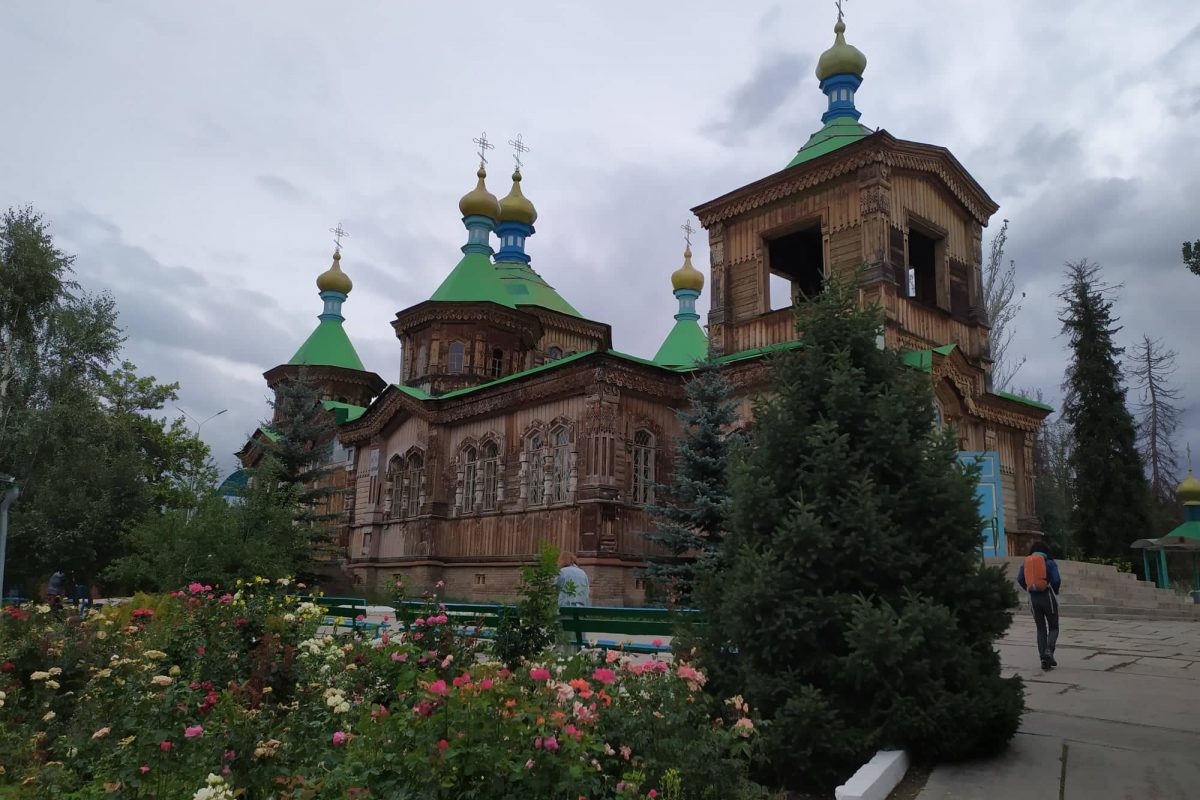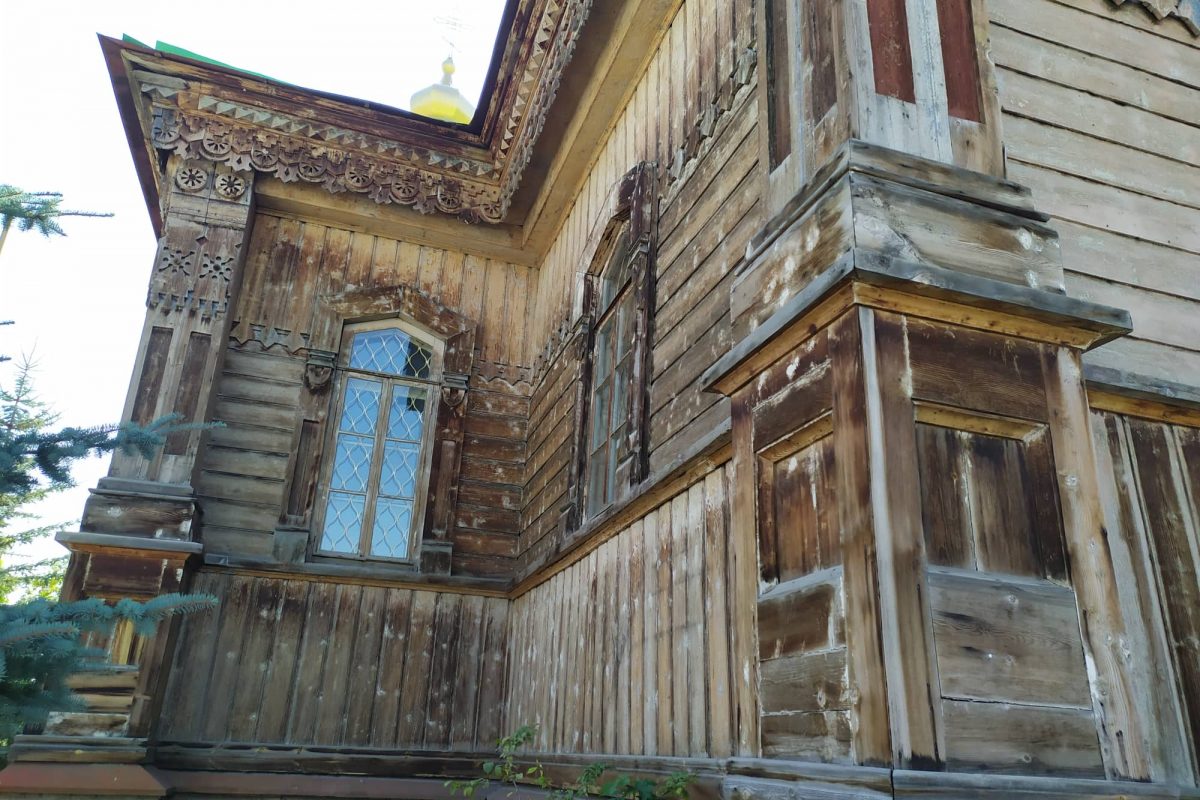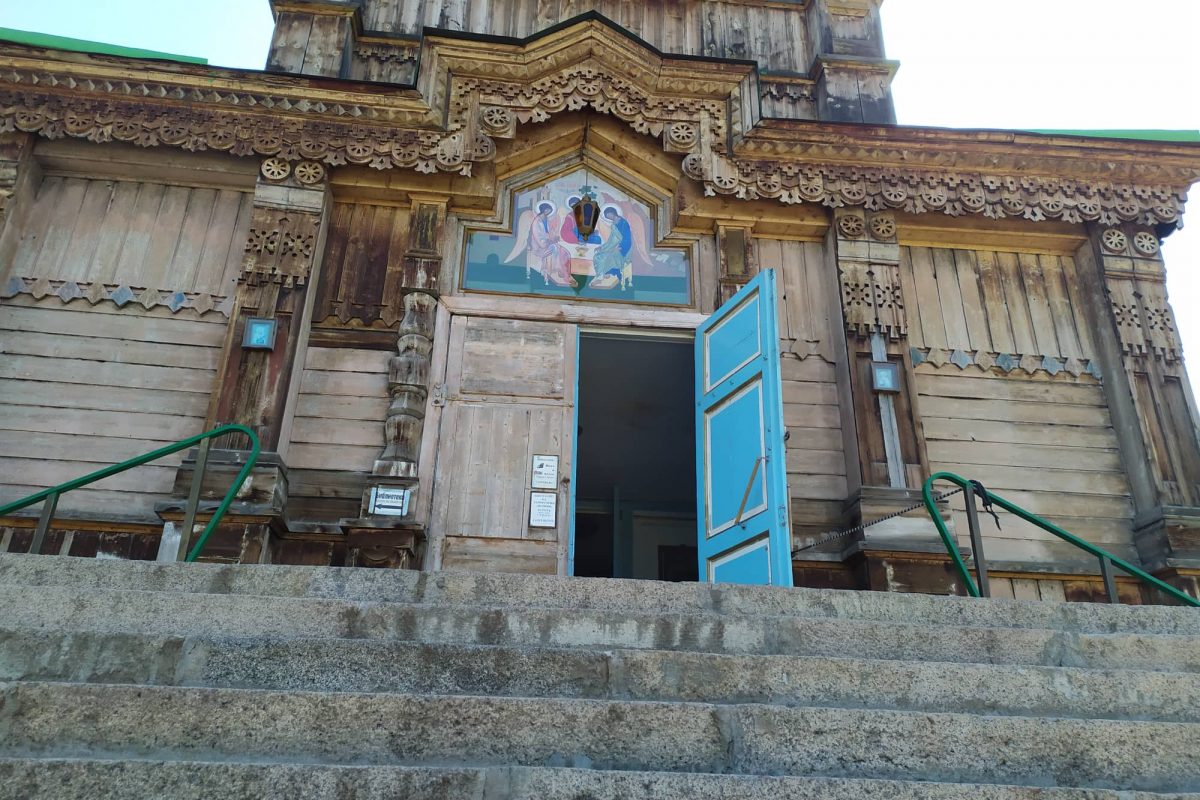Issyk Kul region of Kyrgyzstan is the third after Bishkek and Chui region by the number of residing orthodox Christians.
Follow us on LinkedIn
*This publication was prepared as a series of CABAR.asia articles dedicated to raising awareness on religious diversity in Central Asian countries. The authors do not seek to promote any religion.
The Orthodox church of the Holy Trinity in Karakol is deemed historical and architectural landmark of the republican significance. A wooden building with domes is the sightseeing attraction of the town.
However, everything what is left from the bell tower is the semantron – bronze bars beaten by a bell ringer.
It was demolished back in 1932, and the bells, the biggest of which weighted about a tonne, were removed. The church cannot afford to install the new bell as it costs 8-9 thousand dollars.

According to archpriest Sergei Chuvichkin of the Church of the Holy Trinity in Karakol, 200-300 parishioners gather on holidays in the church, and about 50 on ordinary days. They are mostly Russians, with rare instances of the Kyrgyz who become orthodox. Although, according to the priest, this is peculiar to every large curacy.
People who are not Christians also attend the church. Some come to place a candle to the icon of the Mother of God and ask for children, others come to pray.
“Kyrgyz, who are more say Tengrians, attend more. They respect all religions, including orthodoxy. Many come here to take holy water and candles, others come just to pray a little. Many people say they feel good here and everything is well in their lives afterwards. Moreover, they consider themselves Muslims and don’t even think about christening,” Chuvichkin said.
Tough years
The orthodoxy came to Issyk Kul region of Kyrgyzstan back in the 1860s together with the first Russian settlers. According to archpriest Sergei Chuvichkin of the Church of the Holy Trinity in Karakol, the first orthodox church in the region was a temporary one and was built by newcoming Cossacks of the military clergy.
“Once there was a permanent post here, and then the town of Karakol, it was decided to build the church of brick. However, it didn’t last long, just 10 years or so. After the destructive earthquake the church fell into disrepair,” Chuvichkin said.
Afterwards, it was decided to build the church of wood. The construction started in 1891 and completed in 1895. Initially, the church was made in the form of a cross, but then it was expanded and in 1897 it had its current form.

But in 1932 the Soviet power seized the church, dismantled the bell tower and four domes up to the roof and left only the central dome drum. According to the priest, many things were burned down, and icons and other accessories were sent to furniture plants for the production of spoons, tables and other utensils out of them. Religious workers tried to preserve some things.
The building itself was reconditioned to a club for the next 12 years. And only back in autumn 1944 the church was given back to the believers and restored to the maximum extent possible.
“Since then, church services were performed there until 1961. All icons and icon cases (special cases or glass shelves for icons – editor’s note) available here were restored in 1945 to 1961. Since then, we have the icon of Tikhvin and the Vladimir icon,” the priest said.

The Tikhvin icon was also sent to the furniture plant in 1932. But it was miraculously saved by two workers – an old man and a young worker Nikita Kabernyak.
“They took the icons from the plant and hid them all the time – either in the roof space, or even buried in the ground. They managed to preserve it by some miracle. At the end of the war, when Nikita Kabernyak was at the front, his wife brought those very icons to the church. They are kept here up to now,” Chuvichkin said.
In 1961, the church was seized again and a special Children’s and Youth Sports School of Olympic Reserve was opened in its building. The city committee of Komsomol was opened in the ancillary building.
In 1989, the building was transferred to the ministry of culture and it was decided to make a local history museum in the church. The renovation of the building started, four domes, bell house and wood engravings were restored. Two years later the Union collapsed, funding stopped, and the building was derelict.
“Since 1991, we started to restore the church little by little, install glass panels as the windows were without them, installed central heating. Since October 1993, regular church services were performed in the church. And later on, in 1995, the first president of the Kyrgyz Republic, Askar Akaev, transferred the church to the ownership of the Russian orthodox community with all adjacent territory,” the priest said.
Photo: CABAR.asia
“They treat us with respect”
Vyacheslav Moskalev lives in the village of Chelpek, near Karakol. He started attending the church when he was adult – 28 years old.
In our village, the majority of residents are Kalmyks, who are Muslims, just like the titular ethnic group. However, they treat us with respect, so we don’t feel any problems.
The church of the Holy Trinity of Karakol has a school, which is funded by parents. There are six grades in it and 95 pupils. There are representatives of Kyrgyz, Dungan, Korean, and Uighur families.
“When parents of other religions come to us, we warn them we provide spiritual education, as well. The parents are open to it and insist their children should study here. We don’t propaganda here and are not going to treat them accordingly. However, if your child grows up and wants to receive baptism, it would be up to them,” Sergei Chuvichkin said.
According to the opinion survey held by the State Commission for Religious Affairs in 2016, about 5 per cent of the people of Kyrgyzstan deem themselves orthodox Christians.
The majority of the respondents live in Bishkek, 16.2 per cent, Chui region, 13.3 per cent, and Issyk Kul region, 8.5 per cent.
This publication was produced under IWPR project «Forging links and raising voices to combat radicalization in Central Asia»





